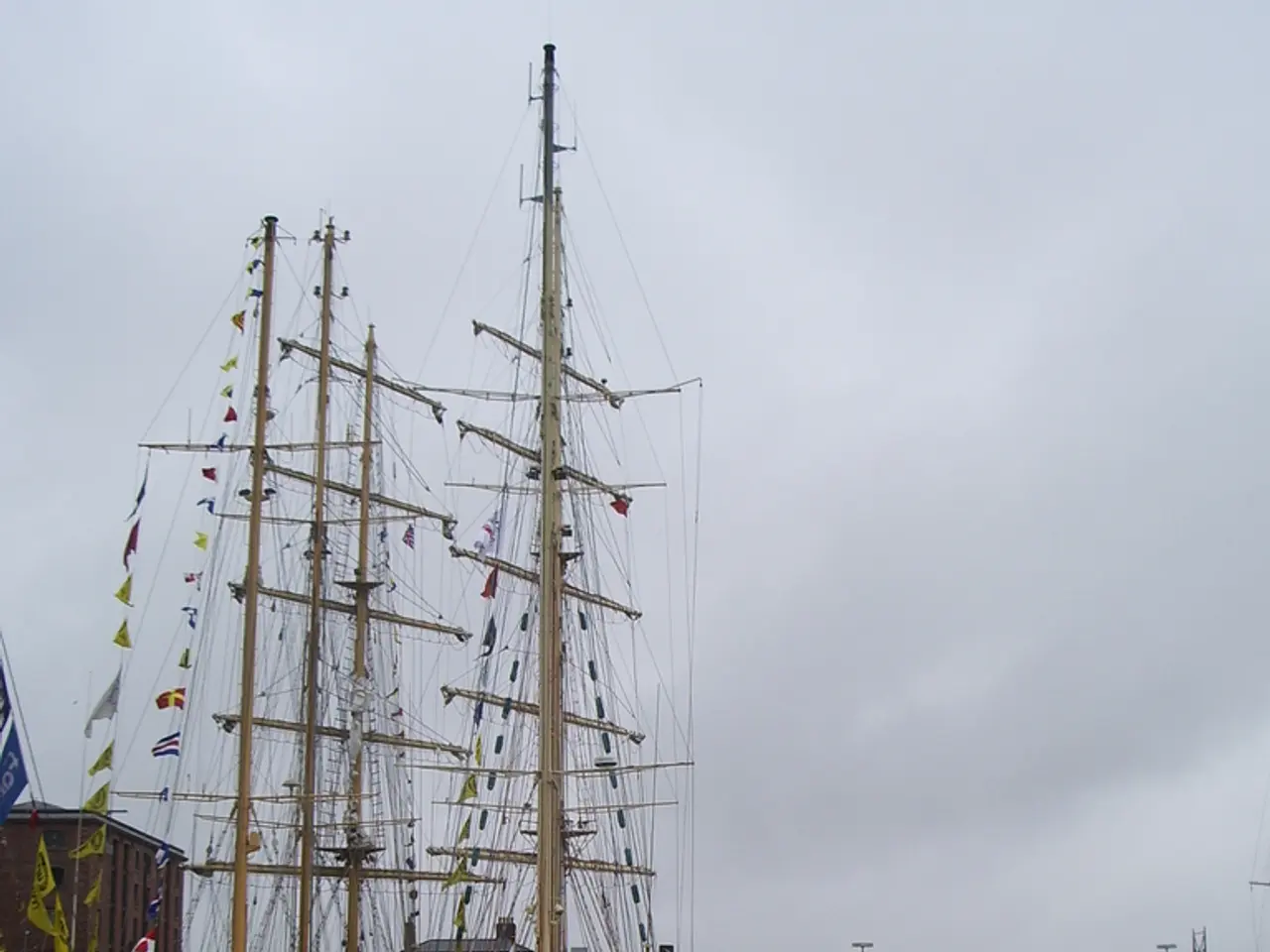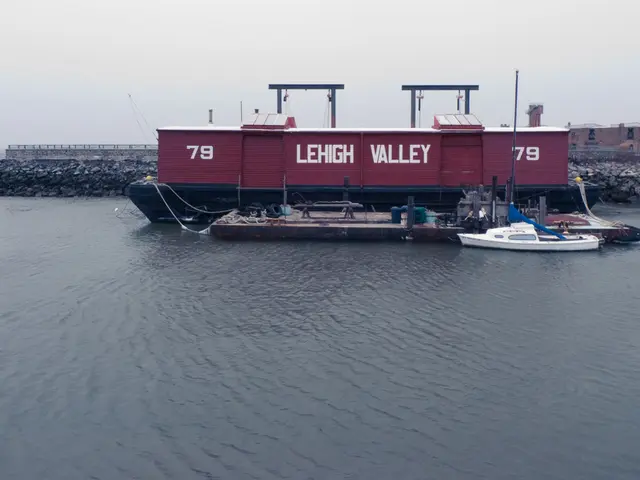Massive Cruise Ships Shatter Passenger Records, Swamping Oceans with Their Environmental Impact
The cruise industry, once a symbol of luxury and adventure, is now facing a significant challenge: its environmental footprint. From plastic pollution to emissions and waste discharge, the industry is grappling with a host of environmental issues that threaten to make it one of the biggest environmental problems in global tourism.
Turtles, birds, and fish are mistakenly consuming plastics, leading to poisoning and mass deaths. This unfortunate trend is not just limited to landfills; it extends to our oceans as well. The discharge of blackwater and greywater promotes the proliferation of harmful algae and the formation of oxygen-depleted dead zones.
Bilge water forms oily layers that smother seabirds and affect coastal communities. Moreover, the byproducts of ballast water disinfection can be more toxic than the disinfectants themselves, posing a threat to marine life.
Sulfur and nitrogen oxide emissions from cruise ships cause acid rain, damaging forests, rivers, and even historical monuments. The emissions from a single cruise ship can exceed the total emissions of millions of cars, contributing significantly to air pollution.
Acoustic pollution from cruises interferes with the communication of dolphins, whales, and fish, causing disorientation, stress, and, in extreme cases, death. Acoustic masking acts like an underwater fog that degrades the habitat of marine species.
The global warming potential of liquefied natural gas (LNG) is 80 times higher than CO2 over 20 years. Cruise ships' emissions contribute to ocean acidification and reduce the capacity of ecosystems to absorb carbon.
However, not all is doom and gloom. NGOs and experts are calling for a transition to green hydrogen and zero-emission fuels in the cruise industry. Companies like MSC Cruises, Royal Caribbean Group, and Carnival Corporation have declared binding commitments to switch to sustainable fuels and reduce waste discharges in the cruise industry.
Organizations like Friends of the Earth believe that a green cruise is achievable, but it requires binding commitments, not just green marketing campaigns. If the cruise industry doesn't speed up the transition to sustainability, it risks losing social legitimacy and the trust of millions of travelers.
The solution for a sustainable cruise industry includes phasing out single-use plastics, investing in clean fuels, electrifying ports with renewable energy, and submitting to transparent emission and discharge controls. The exponential growth of the cruise industry multiplies the pressure on already overexploited ecosystems, making these measures all the more crucial.
In 2022, the 214 cruise ships operating in Europe emitted more sulfur dioxide than all the cars in the continent combined. This stark statistic underscores the urgency for change in the cruise industry.
While the challenges are daunting, the potential for a sustainable cruise industry is promising. It's a matter of commitment, innovation, and cooperation. As we navigate towards a greener future, the cruise industry has a unique opportunity to lead by example and set a new standard for environmentally responsible travel.
Read also:
- Unusual Trivia About Creatures, Cosmos, Past, and the Physical Human Form
- Discovered: Ages-Old Creature Concealed Within Its Shell, Unveiled Upon Breakthrough
- Dangerous Pollutant Removal: Naval Weapons Industrial Reserve Plant and Northrop Grumman Corporation Site (NWIRP) in Bethpage, New York – Clean-up Initiated
- Transforming the Revenue Cycle into a Strategic Financial Resource: New CFO Initiative







